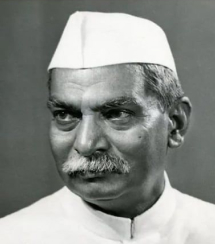Early Life and Education
Born on December 3, 1884, in Ziradei, Bihar in a Chitraguptavanshi Kayastha clan. His father, Mahadev Sahai Srivastava, nurtured his love of learning during his boyhood. His mother, Kamleshwari Devi, on the other hand, influenced him by narrating the tales of the Ramayana and Mahabharata, which constitute India’s rich cultural history. Prasad possessed an excellent scholastic record throughout his schooling. He was fortunate to be able to secure a scholarship that financed his higher education when he topped the entrance examination for Calcutta University. He also graduated from the prestigious institution with degrees in Arts and Law.
From Lawyer to Freedom Fighter
Following his law studies, Prasad began a legal firm at the Calcutta High Court in 1915. He indeed founded the ‘Bihar Law Weekly’ after shifting operations to Patna, which started to highlight his legal knowledge as well as journalistic passion. When Mahatma Gandhi came to Bihar in 1917 to champion the cause of farmers bullied by English tenants of indigo plants, Prasad’s life took a different turn. He was motivated by Gandhian ideals and actively took part in the campaign, which signaled the beginning of his involvement in the Indian freedom movement.
Gandhi’s Stalwart Supporter
Struck by Gandhi’s nonviolent resistance doctrine, Prasad became one of the most encouraged devotees. In 1920, at the height of the Non-Cooperation Movement, he made an exceptional personal financial commitment so that he quit law and hustled full-time in supporting the independence cause. In the 1920s and 1930s, Prasad emerged as the most extraordinary leader of the Indian National Congress. He was imprisoned several times due to his involvement in national activities such as the Civil Disobedience and Salt Satyagraha movements. His immense dedication and fantastic organizational leadership pleased Gandhi. The increasingly eminent British leader named him his “Acharya”.
Architect of Independent India
Prasad did more than participate actively as independence approached, he also contributed policies. As the President of the Indian Constituent Assembly, the nascent country’s legislative body intended to produce a new constitution, Prasad presided over the drafting and then secured a functioning federal structure in India.
First President of Independent India
In 1950, India elected Prasad as her first President. He was subsequently twice re-elected a record 12 years in office. As President, he financed several social improvements and worked valiantly to reinforce India’s young democracy.
Legacy
A Scholar-Statesman Rajendra Prasad’s effect has been felt long after he left office. He was a wise man who could rely on India’s previous history. More significantly, his educational and social ideals still resonate. He was a scholar-statesman in Brazilian fashion, combining intellect and work for the foreign power that India was striving to be. As the most significant but ignored leading actor of recent Indian history, he was finally given India’s highest civilian honor, the Bharat Ratna, following his death.

